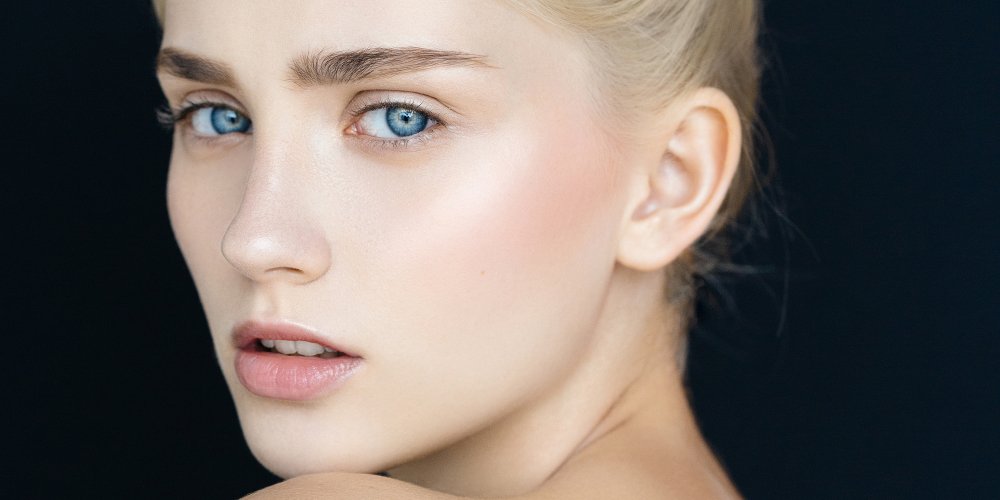We have known some for a long time. Others appeared recently on the labels of our cosmetics. And for good reason, acids can make us beautiful skin. How do they act? What skin are they for? Do they have contraindications? A specialist answers us.
- Alpha Hydroxy Acids, (or AHA) for new skin
They are present in some plants: apple (malic acid), citric (citrus) glycolic (sugar cane). They are used as keratolitics to chase my dead cells to varying concentrations depending on the desired effect.
They reduce the visibility of my spots by accelerating the exfoliation of the horny layer loaded with melanin. They stimulate the "turn over" and this cellular renewal allows a better quality of skin. If my skin is thin and sensitive I use them in the evening by choosing low concentrations and I start to apply them every other day or two.
- Beta Hydroxy Acids, Anti Gray Mine
Their main representative is salicylic acid, present in willow and aspirin. They have the same functions, indications and precautions for use as AHAs.
- Ketoacids, for a gentle peel
These are organic acids found in certain flowers, such as hibiscus. They are an alternative to AHAs to recommend if the skin is sensitive because they are less irritating.
- 18 Beta Glycyrretinic acid or Enoxolone, against stains
Present in licorice is a recognized anti-inflammatory. It is also endowed with interesting anti-stain properties. In patients with atopic dermatitis it reduces redness, edema, itching. More generally, it is an excellent protector and effective local treatment that calms skin irritations.
- Hyaluronic acid for hydrated and plumped skin
This universal moisturizer, formerly of animal origin is today obtained by biotechnology. If hyaluronic acid is of high molecular weight, with large molecules it stays on the surface, and instantly smooths my skin. The most interesting are the fractional hyaluronic acids whose small molecules, by sneaking between the cells, give a pulpy and bounced appearance to the face. It is a good plan if the skin tends to wrinkle and lose its softness.
- Retinoic acid, anti wrinkle and smoothing
This active derivative of vitamin A activates the synthesis of collagens and reduces fine lines. But beware: it is very irritating and in any case is only issued under medical prescription. It increases the photosensitivity of the skin and requires to wear effective sunscreen permanently. I can nevertheless find over-the-counter Retinol (pure vitamin A), part of which naturally turns into retinoic acid. But I do not use it every night until my skin is used to it. It can flake, tingle, blush during the first applications. If these side effects persist I stop this treatment for a few days.
- Ascorbic acid or vitamin C, for a skin full of radiance
It is present in many plants (acerola, strawberry, citrus). It is the champion of anti-aging as its spectrum of activity is wide. It protects my cells from oxidation, it boosts my collagen , accelerates my healing, and fights against my spots . Its defect: it is a very unstable molecule that does not support water, light or heat. This is remedied by the use of stabilized vitamin C derivatives which have the same effectiveness. A tip: if my skin is hypersensitive I must avoid acid PH formulas that can irritate me. The dermatologist and the pharmacist are there to advise me.
Folic acid, or Vitamin B9, to repair tired epidermis
It is found in green vegetables (spinach, salad, sorrel), animal liver, dried nuts to shell ... It has a restorative action on my tired cells. Excellent to fight against my drawn features and without contraindication by topical!
- Azelaic acid, against the excess of sebum
It is naturally present in some cereals (wheat, barley ...) It is an excellent anti-stain. It is particularly indicated if I have oily skin because, at the same time, it regulates and normalizes my sebum.
- Essential fatty acids or AGE, for supple and nourished skin
Omega 3 and omega 6 (linoleic acid, arachidonic acid) are found in certain vegetable oils such as sunflower and rapeseed. They are not synthesized by the body and must be brought by my diet or topically on my skin. They stimulate the metabolism of my cells, contribute to a good cohesion between them and ensure my skin a good elasticity. If I am a diet low in fat I have every interest in feeding my skin.
Thanks to Lionel de Benetti, cosmetologist engineer.




